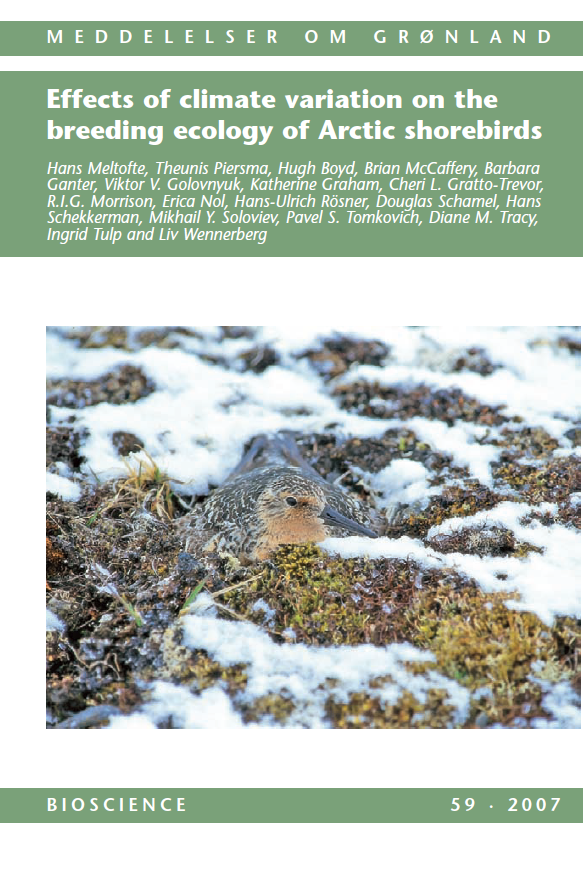Effects of climate variation on the breeding ecology of Arctic shorebirds
DOI:
https://doi.org/10.7146/mogbiosci.v59.142631Abstract
About 50 species of shorebirds breed in the Arctic, where they constitute the most characteristic component of the tundra avifauna. Here, we review the impact of weather and climate on the breeding cycle of shorebirds based on extensive studies conducted across the Arctic. Conditions for breeding shorebirds are highly variable among species, sites and regions, both within and between continents.
Weather effects on breeding are most moderate in the Low Arctic of northern Europe and most extreme in the Siberian High Arctic. The decision of whether or not to breed upon arrival on the breeding grounds, the timing of egg-laying and the chick-growth period are most affected by annual variation in weather. In large parts of the Arctic, clutch initiation dates are highly correlated with snowmelt dates and in regions and years where extensive snowmelt occurs before or soon after the arrival of shorebirds, the decision to breed and clutch initiation dates appear to be a function of food availability for laying females. Once incubation is initiated, adult shorebirds appear fairly resilient to variations in temperature with nest abandonment primarily occurring in case of severe weather with new snow covering the ground. Feeding conditions for chicks, a factor highly influenced by weather, affects juvenile production in most regions.
Predation has a very strong impact on breeding productivity throughout the Arctic and subarctic, with lemming Dicrostonyx spp. and Lemmus spp. fluctuations strongly influencing predation rates, particularly in the Siberian Arctic.
The fate of Arctic shorebirds under projected future climate scenarios is uncertain, but High Arctic species and populations appear particularly at risk. Climatic amelioration may benefit Arctic shorebirds in the short term by increasing both survival and productivity, whereas in the long term habitat changes both on the breeding grounds and in the temperate and tropical non-breeding areas may put them under considerable pressure and may bring some of them near to extinction. Their relatively low genetic diversity, which is thought to be a consequence of survival through past climatically-driven population bottlenecks, may also put them more at risk to anthropogenic-induced climate variation than other avian taxa.

Downloads
Published
Issue
Section
License
Coypyright by the authors and the Commision for Scientific Research in Greenland / Danish Polar Center/Museum Tusculanum Press as indicated in the individual volumes. No parts of the publications may be reproduced in any form without the written permission by the copyright owners.

